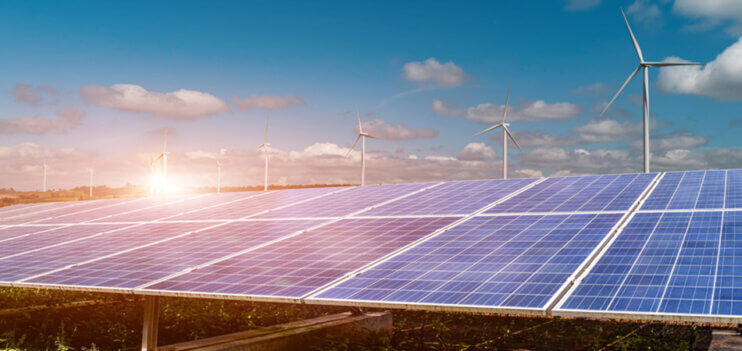Emissions reduction by 2035
This month, nations that are signatories to the Paris Climate Agreement have submitted their Nationally Determined Contribution for emissions reduction by 2035. Although individual countries use different criteria, the stated aim is to achieve net zero emissions by 2050 and hold global warming to about 2C (the original target of 1.5C is a lost cause).
To reduce carbon emissions, physical assets owned or controlled by businesses could be affected by government policies, new and improved technologies and the re-pricing of climate risk by financial markets. Also, demand and supply chains could be influenced by options imposed on (and by) businesses; example being:
- eliminate government subsidies on fossil fuels
- increase tax on fossil fuels
- carbon tax on greenhouse gas emissions
- road usage charge
- delivery vehicles must be electric
- deliveries to city retailers only at night to reduce traffic congestion and emissions
- businesses charge consumers the full cost of home delivery
- VAT/GST rate increased and/or widen the scope of items and services covered
- tax non-renewable materials contained in a product
- household goods to provide information concerning durability. All must be repairable, with branded replacement parts sold at a low retail price mark-up
- to avoid higher borrowing costs, business borrowers agree to achievable, pre‑defined and time limited emissions reduction goals set by financial lenders
- incentives for businesses and citizens to become self-sufficient in energy
- ‘work from home’ legislation
Emissions are an input to variable and extreme weather events. It is estimated that about 70 percent of businesses worldwide are exposed to unexpected and extreme weather events that will likely impact their profitability. And there will be a lower likelihood of compensation for damage from insurance and governments, especially if the location is deemed to be ‘high risk’.
Actions by Supply Chain professionals
An organisation’s supply chains are responsible for about 80 – 90 percent of Scope 1, 2 and 3 emissions, so the main focus for emissions reduction projects will be on the inbound, internal and outbound supply chains of your organisation. The three scopes of Greenhouse gas (GHG) emissions to be reduced are:
- Scope 1 emissions are direct emissions from resources owned and controlled by the business, including owned and contracted vehicles and facilities
- Scope 2 emissions are indirect emissions from the generation of purchased energy, supplied by a utility provider
- Scope 3 emissions are indirect emissions that occur through the supply chains of a business – both upstream and downstream
Business model change
The common business approach to supply and demand will need to change from the current ‘take, make and dispose’, that accepts waste as a cost born by society, to ‘restore’. This translates for:
- Process industries to ‘re-use’ through development of new by-products and co-products from waste streams
- Discrete industries to ‘design for re-use’, enabling multiple cycles of disassembly. As refurbishment and re-manufacturing (including the ‘right to repair’ for consumers) is adopted by businesses (or is required under government legislation), sales markets could change for discrete products.
- Some product markets could move from ‘consumers who buy’ to ‘users who rent’. These will incorporate multiple sales cycles for products and change the structure of supply chains, including Reverse Logistics becoming an integral part of Operations
- Current schemes for consumers to ‘Return and Earn’ for empty bottles (PET and glass) and cans (aluminium and steel) could be extended for all household goods and apparel
For Procurement, there will be an increasing need to source sustainable materials; eliminate or reduce non‑recyclable materials and purchase recyclable packaging. Buying the logistics services of interstate heavy road transport, shipping and aviation will need to recognise the challenges and costs for these businesses to reduce emissions. The outcomes may result in less choice of provider, changed routes and higher costs.
Reduce distance to remove emissions
Improved production technologies, including robotics, could encourage cost-effective domestic and local production of some items. This reduces the need for inventory, warehouses and transport. Examples of local production are: additive manufacturing (called 3D printing) and automated ‘small package’ production systems in retail outlets e.g. ‘hot bread’ kitchens, cakes and tarts production; coffee roasting supply and knitting machines for ‘while you wait’ manufacture of apparel.
For larger items, furniture could be ‘assemble to order’ locally from modular parts that are ‘made to order’, rather than finished products shipped around the world from ‘low cost countries’. And a business in New Zealand provided a leading example of applying ‘just in time’ assembly processes for white goods in low volume sales markets.
Reducing time for deliveries to retailers and residencies will be influenced by the current and planned urban population density in cities, which to increase, will require considerable time and capital expenditure by governments.
Low emissions facilities
Increasingly, warehouses and distribution centres will be expected to use on-site renewable energy sources (typically solar panels with battery storage) to provide power for operating the facility. It is expected that the net amount of energy generated to equal or exceed the amount of energy required. Terms used for these buildings are: ‘carbon zero’, ‘carbon neutral’, ‘zero energy’ and ‘zero emission’. The facilities will also be ‘solar efficient’, to include insulated and heat diffusing roofs and insulated walls. In the northern hemisphere, offices will face south and openings for operations to the north and east. In the southern hemisphere, offices face north and openings for operations are to the south and east.
Information Technology
The hype has died concerning the Industrial Internet of Things (IIoT), Edge computing and Blockchain, so development can be done that will enable these technologies to collect and share real‑time data along supply chains. Use analytics to improve the understanding of data collected through the supply chains.
Cost and time for action
Although there could be discussions in your organisation about the high cost of emissions reduction in supply chains, much of the ‘total cost’ to achieve targets will be investments to replace existing assets with those that are more efficient and cheaper to operate. These investments would eventually happen but, by having an emissions reduction target, the timing is brought forward.
The current expected warming of 2.6 degrees C by 2050 shows that it is time for serious action to limit carbon emissions by 2035. And to accept that climate and nature do not negotiate outcomes. The only choice available for supply chain professionals is to focus either on substantially reducing emissions – or not. Then adjust processes (and lifestyles) accordingly.

